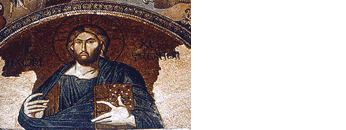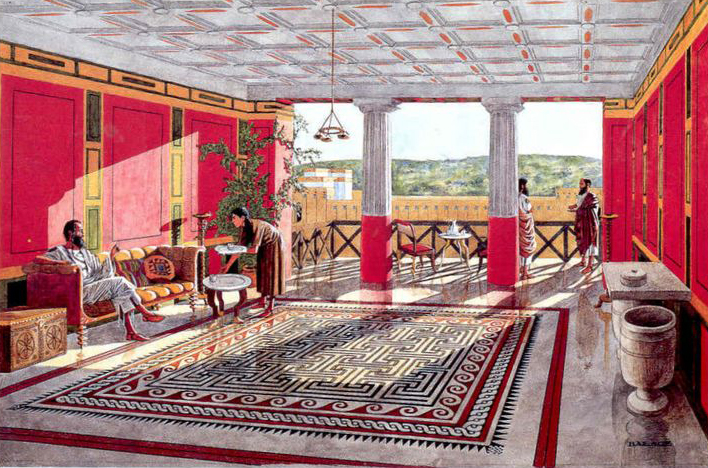
|
|
|
|
| Class Prep |
|
|
|
- Why Was Jesus Executed?
-
 The gospels report that Jesus encounters opposition almost from the first
moment of his ministry. This reaches a climax during one final Passover pilgrimage
to Jerusalem, when Jesus is betrayed by one of his followers, arrested, tried,
and executed by the Roman authorities, with the collaboration of the Jewish priestly aristocracy. Read the gospel passages to become familiar with their version of events. The gospels report that Jesus encounters opposition almost from the first
moment of his ministry. This reaches a climax during one final Passover pilgrimage
to Jerusalem, when Jesus is betrayed by one of his followers, arrested, tried,
and executed by the Roman authorities, with the collaboration of the Jewish priestly aristocracy. Read the gospel passages to become familiar with their version of events.-
- Today's reading from Crossan and Reed focuses on the city of Jerusalem, not only in the time of Jesus but also in the decades right after his death, when tensions mounted to the point of open revolt (actually, three open revolts!). In jumping into that period, they are providing you an important context not only for judging Jesus' message and the reasons for his execution, but also how the later gospel authors writing after the first revolt understood Jesus in light of those destructive events.
-
- There's a lot of material in their chapter 5, but focus on the following questions:
-
- Why were the rulers and high priests of Israel regarded as illegitimate by some Jews?
- What were some of the archaeological features of the Herodian (Second) Temple and the upper city, with the homes of the aristocratic priests (the image above is a reconstruction of a room in one of their homes)?
- What were the evangelists saying when they portrayed Jesus' entry into Jerusalem, and what was Jesus performing in his "cleansing" of the Temple? How did such actions communicate a challenge to the Roman peace? If neither of them is historical, what precipitated his execution?
- Name two features of the trials of Jesus as recorded in the gospels that are anachronistic, that is, reflecting a situation later in the first century rather than current at the time of Jesus' arrest.
- According to Philo and Josephus, what was Pontius Pilate really like? How does that compare and contrast to the gospel portrait of Pilate's role in Jesus' execution? Why did the gospels change history?
-
-
- Assigned Readings
-
-
-
-
- Presentation
-
-
| Dig Team Project: |
Jerusalem (no presenters this quarter)
|
| Related Artifacts: |
|
-
-
- Further Reading
-
- Brown, Raymond E. The Death of the Messiah: From Gethsemane to the Grave, 2
vols., Anchor Yale Bible Reference Library. New York: Doubleday, 1994.
-
- Sloyan, Gerard S. The Crucifixion of Jesus: History, Myth, Faith. Minneapolis: Fortress, 1995.
-
- --------. Jesus on Trial: The Development of hte Passion Narratives and Their Historical and Ecumenical Implications. Philadelphia: Fortress, 1973.
-
- --------. Why Jesus Died, Facets. Minneapolis: Augsburg
Fortress, 1995.
-
-
- Sources
-
- Photograph: "Reconstruction of a Wealthy Priest's Home in Jerusalem's Upper City," in John Dominic Crossan and Jonathan L. Reed, Excavating Jesus: Beneath the Stones, behind the Texts (San Francisco: HarperSanFrancisco, 2001) figure 12 after p. 170.
|
|
|
|
|
